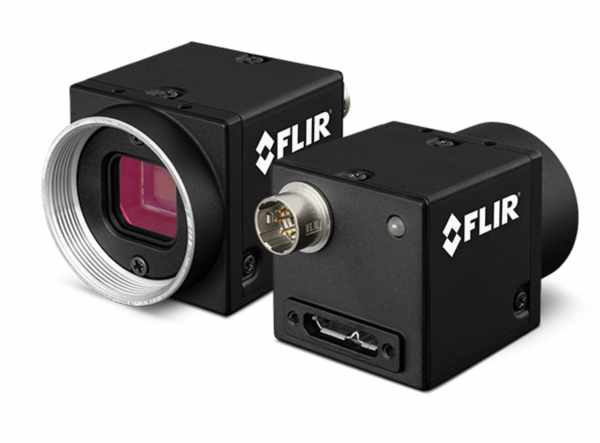Choosing the right interface for your machine vision application is a key decision in your camera selection process. The following sections provide an overview of the different types of cables and connectors available for machine vision applications along with associated pros and cons.

Dedicated interfaces
Useful for applications where extremely high-speeds or ultra high-resolution necessitate the use of such interfaces; for example, line-scan cameras used to inspect continuous flow processes like paper or plastic film production where cameras frequently work in the kHz range. However, these interfaces tend to be significantly more expensive, less flexible and add to system complexity. CarmeraLink (supports up to 6.8Gbit/s of data) and CoaXPress (supports up to 12Gbit/s) are dedicated machine vision interfaces typically used in such applications. In addition to the cameras, systems using these interfaces require frame grabbers. These are specialized adapter cards to receive image data and assemble it into usable images. Dedicated machine vision interfaces also use proprietary cables, making integration with other peripherals a little more challenging.
CoaXPress (CXP)
The CoaXpress interface was launched in 2008 to support high-speed imaging applications. CXP interfaces use 75ohm coaxial cables and support data transfer speeds of up to 6.25Gbit/s per channel, with the ability to use multiple channels to support even faster data transfer rates. A CXP cable can supply up to 13W of power per cable and requires that both the ‘device’ and the ‘host’ support the GenICam camera programming interface. While single-lane coaxial cables are inexpensive, the cost of setting up multi-lane cable assemblies and frame grabbers add up very quickly.
CameraLink
The CameraLink standard was launched in the year 2000 by Automated Imaging Association (AIA) and has been upgraded progressively in order to support higher data speeds, with some versions requiring two cables for transmission. The three main configurations available include Base (2.04Gbit/s), Medium (5.44Gbit/s) and Deca/Extended (6.8Gbit/s). The base standard uses MDR (“Mini D Ribbon”) 26-pin connector, while the medium/full configuration doubles capacity using a second cable. The Deca/Extended versions go beyond limits imposed by CameraLink, carrying up to 6.8 Gbit/s of data. Like CXP interfaces, CameraLink requires frame grabbers and additionally need to be compatible with Power over Camera Link (PoCL) standard in order to supply power. CameraLink lacks any error correction or resend capabilities, requiring expensive and cumbersome cable setups to try and eliminate dropped images by maximizing signal integrity.
Read more: INTERFACES FOR MACHINE VISION
